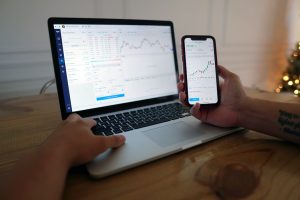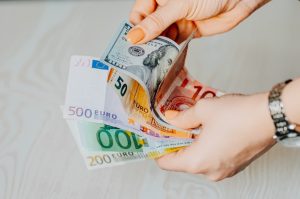Forex trading, also known as foreign exchange trading, is the buying and selling of currencies on the global market. It is the largest and most liquid financial market in the world, with an average daily trading volume of over $5 trillion. Forex trading can be a lucrative investment opportunity for those who understand how it works.
In forex trading, traders speculate on the value of one currency against another. The objective is to make a profit by buying a currency at a low price and selling it at a higher price. For example, if a trader believes that the value of the euro will increase relative to the US dollar, they will buy euros with US dollars. If the value of the euro does indeed increase, the trader can sell the euros for a profit.
Forex trading takes place in pairs, with one currency acting as the base currency and the other as the quote currency. The value of the base currency is always equal to one, while the value of the quote currency fluctuates based on market conditions. The exchange rate between the two currencies determines how much of the quote currency is needed to buy one unit of the base currency.
For example, if the exchange rate between the US dollar and the euro is 1.10, it means that one euro is worth $1.10. If a trader buys 100 euros, it will cost them $110. If the exchange rate then increases to 1.20, the trader can sell the 100 euros for $120, making a profit of $10.
Forex trading takes place over-the-counter, meaning that there is no central exchange or clearinghouse. Instead, traders buy and sell currencies through electronic networks or via the phone. This means that the forex market is open 24 hours a day, five days a week, with trading taking place in different time zones around the world.
There are several factors that can affect the value of currencies and influence forex trading. These include economic indicators such as GDP, inflation, and interest rates, as well as geopolitical events and market sentiment. Traders use a variety of tools and strategies to analyze market conditions and make informed trading decisions.
One of the most popular tools for forex traders is technical analysis. This involves using charts and other technical indicators to identify trends and patterns in the market. Traders can use this information to determine when to enter or exit a trade.
Another important aspect of forex trading is risk management. Trading in the forex market carries a high level of risk, and traders must be prepared to lose some or all of their invested capital. To minimize risk, traders can use a range of techniques such as stop-loss orders, which automatically close a trade when a certain level of loss is reached.
In addition, traders can use leverage to increase their buying power and potentially increase their profits. Leverage allows traders to control a larger amount of currency with a smaller amount of capital. However, it also increases the risk of loss, as traders can lose more than their initial investment.
In conclusion, forex trading involves buying and selling currencies in pairs in order to make a profit. It is a complex market that requires careful analysis and risk management. Traders use a range of tools and strategies to identify trading opportunities and manage their positions. With the right knowledge and experience, forex trading can be a lucrative investment opportunity.






